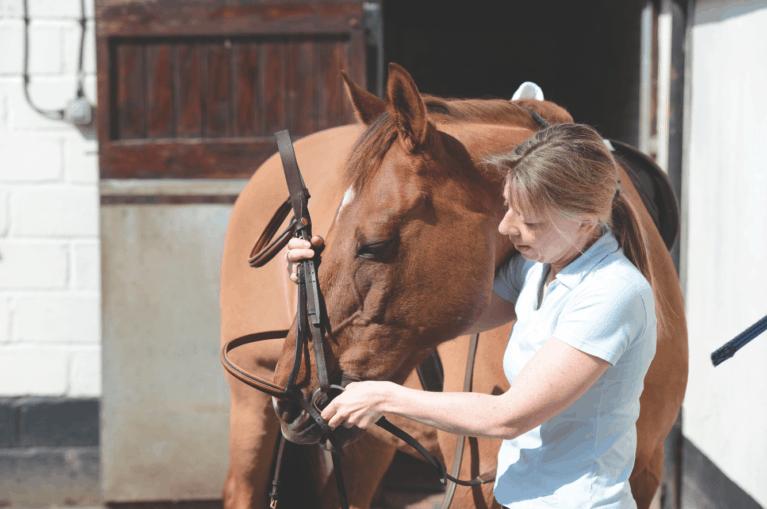Choosing the right bit for your horse can be a minefield. There are several different classes of bit, all with lots of subcategories, and for each bit there’s usually many different mouthpiece options choose from. So where to start.

Choosing the right bit for your horse can be a minefield. There are several different classes of bit, all with lots of subcategories, and for each bit there’s usually many different mouthpiece options choose from. So where to start.
To avoid getting bogged down by the multitude of different bits, it’s best to keep it simple and think about your horse’s mouth conformation, how he carries his head and what he’s like to ride. Maybe he has a fleshy tongue, bears down on your hands and is strong to ride, or maybe he has a spacious mouth that’s sensitive and he has a tendency to carry his head too high? This information will help you narrow down the selection to a smaller number of bits and mouthpieces that might be suitable.
Before you resort to changing your horse’s bit, especially if it’s one he’s been happy with for some time, get his teeth and back checked to make sure he’s not in any discomfort. Book a lesson with your instructor, too, to make sure it’s nothing that can’t be solved with tweaking your riding skills.
Horses for courses
The right bit is very personal to both horse and rider, and not every horse with the same problems and mouth conformation will respond well to the same bit. Therefore, it’s best to narrow down a selection of potentials and give each a try until you find one that works well. There are many bit banks and some saddlers that will allow you to try before you buy or hire the bits you’re interested in, so make use of these services when investigating new bit options. It’s advisable to try a new bit for at least two to four weeks before deciding whether or not you like it.
What does his mouth tell you?
To check your horse’s mouth conformation, look in the side of his mouth and see if his tongue is bulging between his teeth. If it is, it’s likely he has a large, fleshy tongue. Then slide your finger into his mouth where the bit would sit and see how much room there is. To get a comparison so you can gauge what’s normal, ask others at your yard if you can look at their horse’s mouth. Alternatively, ask your horse’s dental technician or vet about the shape of his mouth.
Different classes of bit
Once you’ve looked at your horse’s mouth shape and thought about how he is to ride, it helps to know a bit about how the main types of bit work, so you can pick something that might work for him. This include…
Snaffle
Snaffles tend to be fairly simple bits and are a good starting point, especially with young or green horses. They usually act on the corners of the mouth, tongue and bars of the lower jaw, which has the effect of bringing the head up and in. The action of most snaffles is fairly mild, but can be made stronger by choosing a mouthpiece that has a strong action. They also come with a variety of different cheeks.
Gag
Gags are similar to snaffles, but the cheekpieces run through the rings of the bit and the reins attach directly to the cheekpieces. They act to lift the head and can be severe, particularly in the wrong hands, because while the bit lifts the head, it also places pressure on the poll to bring the head down, so it creates a lot of pressure between the mouth and poll. Like snaffles, they can come with a variety of different mouthpieces to adjust the severity.
The ideal is to use a gag with two reins – the main rein on the snaffle ring and the second rein on the gag ring. This way you’re mainly using the milder action of the snaffle and only engaging the gag action when you need to.
Testing, testing…
When trying a new bit for the first time, it’s advisable to ride in an enclosed area and to have a helper on the ground, in case your horse reacts to the new feeling. You might also find it useful to have your instructor or an experienced friend present to get their opinion on how well your horse is working in the new bit.
To find out more about the different types of bit available, get your copy of Spring Horse&Rider, on sale 9 February.















